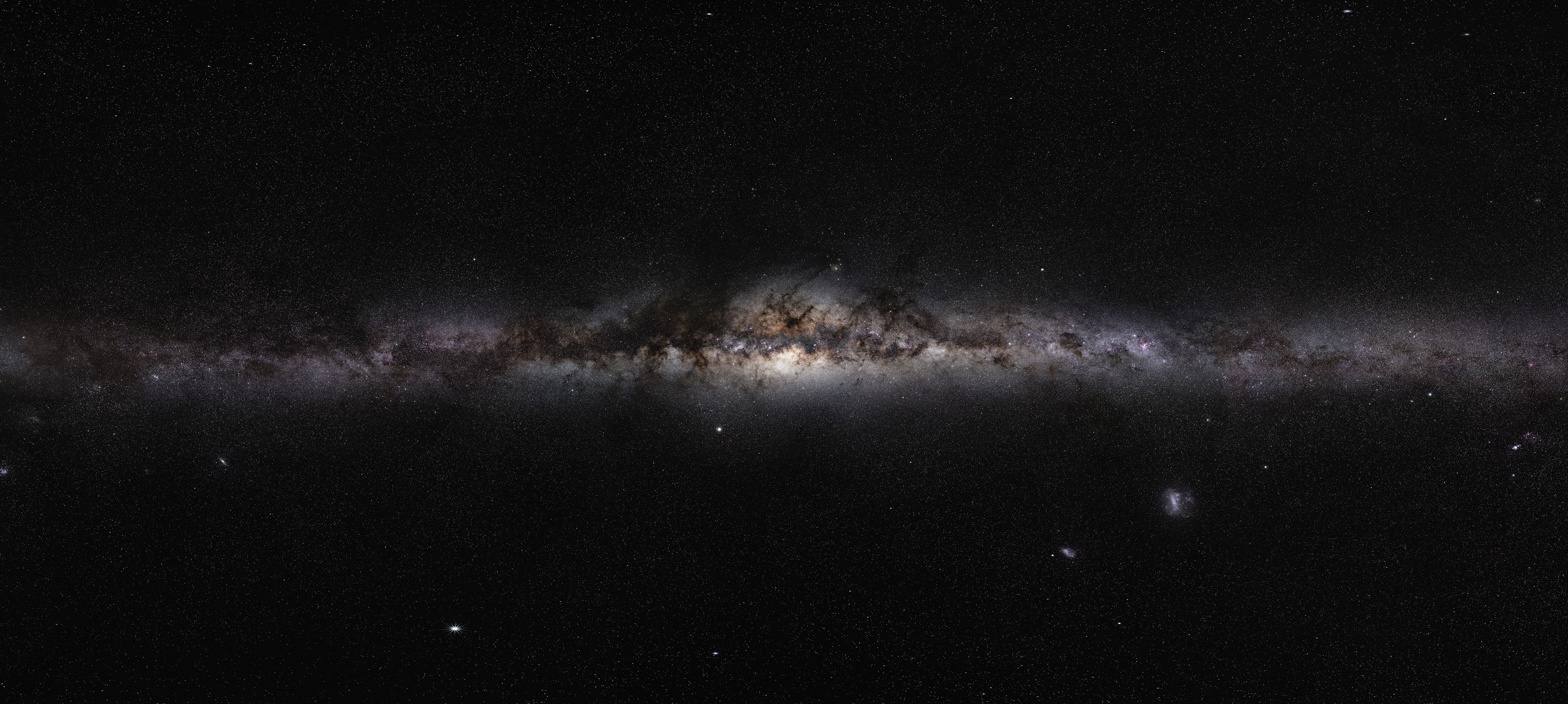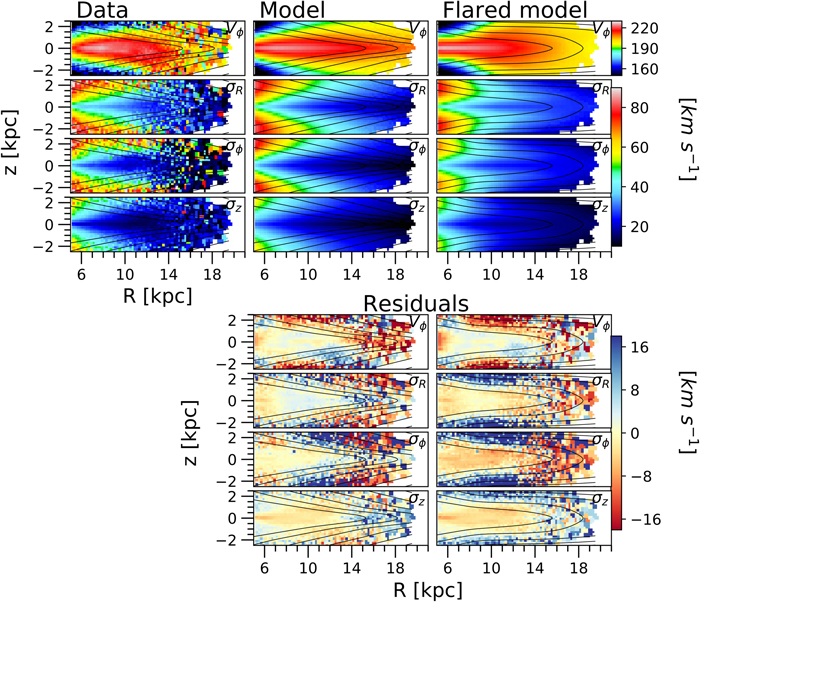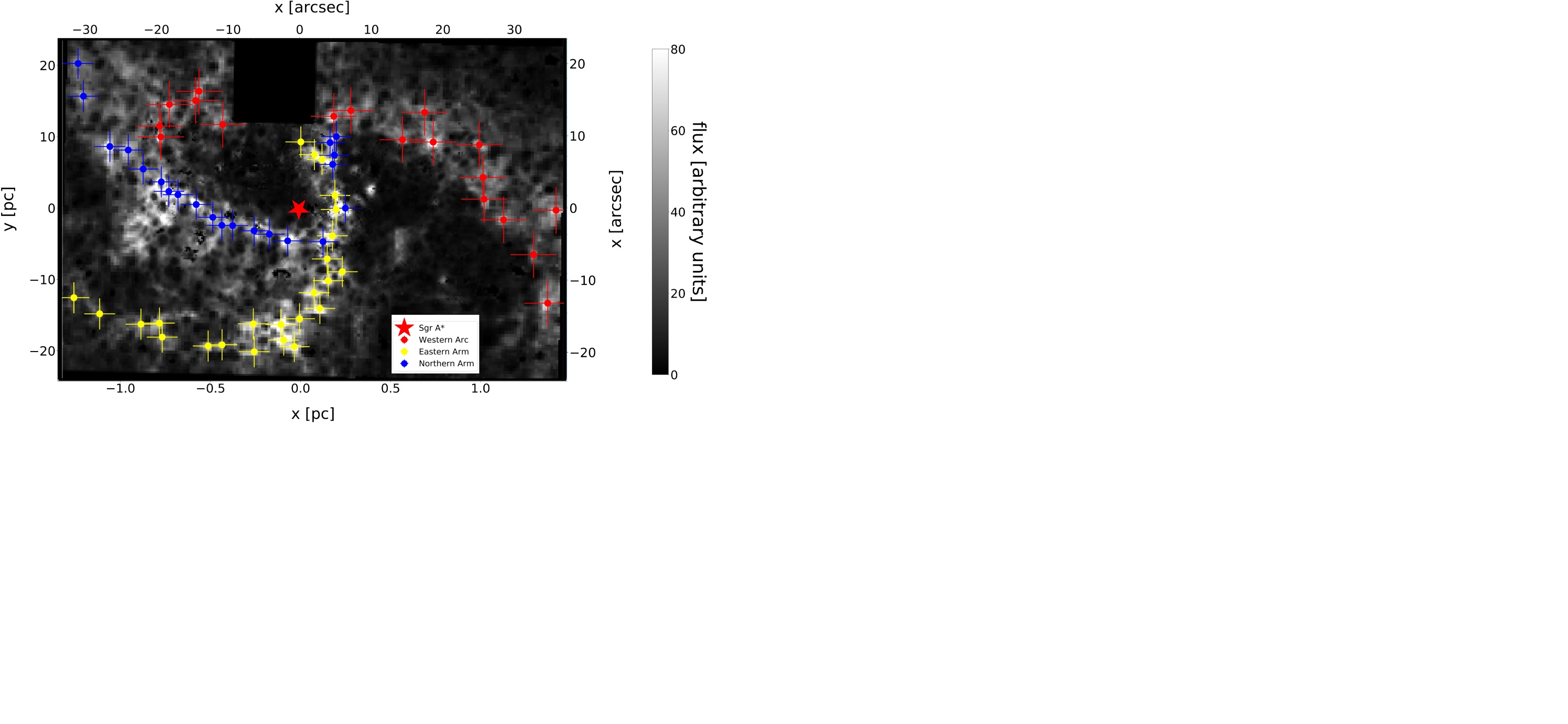Dynamical model
Dynamical models are important for our understanding of galaxies, since they allow us to infer importnat information about the gravitational potential, mass ditribution and dark matter content of a galaxy. For our Galaxy there have been many different surveys providing us with a huge data set of stars, however by far the largest survey is Gaia.
In my work we used mainly Gaia data and the Jeans anisotropic method (JAM, Cappellari 2008, 2020) to fit a model for the disk region of our Galaxy. We infer dark matter slope, dark matter density, the circular velocity and the total mass density of the Galaxy.
The results of this work have been published in ApJ Nitschai et al, 2021 and MNRAS Nitschai et al., 2020, see Publication List
Image Credit: Nitschai et al., 2021


